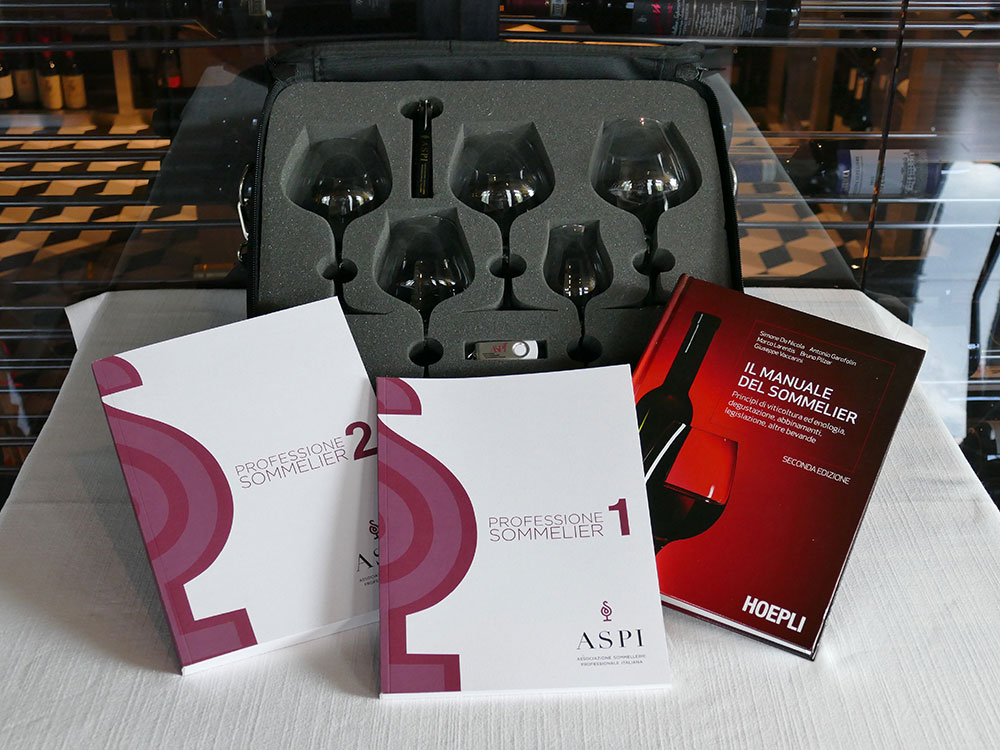Didactics
THE STUDY PROGRAM
ASPI offers a particular didactic path to offer the trainee for acquiring technical and cultural background that allows students to acquire the basics. The preparatory course for Sommeliers is divided into three levels, where at the end of the first two levels the qualification of Mastro Coppiere is obtained.
Propaedeutic Course 1st Level
I ° PROPAEDEUTIC
It consists of 13 lectures in the classroom, of 3 hours each, in which all aspects related to viticulture, oenology, wine tasting are addressed, which is accompanied by the discovery of other drinks, including water, coffee, liqueurs, spirits and beer. A visit to a winery and a final test is included in the program. At the first lesson, the trainee is provided with a briefcase containing the pair of glasses for tasting, the corkscrew, the textbook, and the notebook for tastings.
LESSONS
Registration and presentation of the course
The figure of the Mastro Coppiere (Cupbearer) and the Sommelier – Role and professional outlets of the Sommelier – Tools of the taster: the tasting card, the tasting glass, the types of bottles, the uncorking – Tasting of an Italian sparkling wine.
History of wine – Tree of the vine and forms of cultivation – Cultivation of the vine – Cycle of the vine – Works in the vineyard – Type and characteristics of the land – Service: mise en place, presentation of the bottle, pouring and serving temperatures – Tasting of 3 wines .
Bunch of grapes: singular grape, international and indigenous vines – Red, white and rosé winemaking techniques, carbonic maceration, maturation and aging – Tasting of 3 wines.
General rules for the correct execution of the tastings – “Visual flavour”, the connection between smell and colour – Clarity, transparency – Colour intended as hue or hue of red, white and rosé wines – Reflexes or nails – Intensity and liveliness of colour – Fluidity and formation of the arches – Effervescence – Decanting – Tasting of 3 wines.
Memory and smells, the association of smells – Intensity – Quality – Bouquet and complexity of aromas – Aromas present in the different types of wine, frank, fragrant, aromatic, vinous – Recognition of aromas – Service tests – Tasting of 3 wines.
Taste, flavours – Tasting test with recognition of flavours: bitter taste, salty taste, acid taste, sweet taste, tactile sensations, body, softness, mouth aromas – Tasting test with recognition of flavours – Tasting of 3 wines.
Italian legislation – European legislation – Quality pyramid – Comparison between Italian and European legislation – How to read a label – Tasting card: rereading of all the various descriptive phases – Etiquette rules and review of service techniques – Tasting of a fizzy, sparkling and carbon dioxide maceration wine.
Historical notes, production technique, classification, glasses, glasses and serving temperature – Tasting of 3 types of beer.
Difference between spirits and liqueurs – Distillation technique – Overview of the most important Italian and foreign spirits and liqueurs – Tasting of 3 spirits and 3 liqueurs.
Sparkling wine (classic method or methode traditionnelle, charmat or Martinotti method) – Passito wines – Late harvest – Muffled wines (Botrytis Cinerea) – Sforzati wines – Fortified wines – Uncorking and serving of sparkling wines – Tasting and serving of 5 wines
Water and mineral water, classification, composition and how to read a label – Tasting of 4 mineral waters with different fixed residue – Tea, production and classification – Tasting of 3 types of tea – Coffee, production and classification – Tasting of 3 types of coffee.
History and evolution of taste – Sensory analysis of food – Matching by concordance – Matching by contrast – Words of food – Notes on the food / wine pairing form – Harmony of food with different drinks – Tasting of 4 wines and identification of possible pairings with foods such as cheeses, meats and chocolate.
Propaedeutic course 2nd Level
It consists of 10 lectures in the classroom where the national enography region by region, which is accompanied by the enography of France, Europe and the world is treated.
The lessons end with a gastronomic didactic meeting, and they are followed by the final verification test, divided into written and oral / practical part. Upon completion of the second level, an exam is offered and those who pass the exam will obtain the qualification of Mastro Coppiere
LESSONS
The choice of glasses, the serving temperature, the succession of wines at the table, the uncorking of a bottle of wine.
Sparkling wine and related service – Tasting, “blind” recognition and “score” sensory analysis –
Taster tools: the tasting card, the tasting glass, corkscrew wooden matches –
Tasting of 4 wines.
Aosta Valley – Piedmont – Lombardy – Liguria – Tools of the taster: tasting cards, goblets from
tasting, corkscrew – Tasting of 5 wines
Trentino and Alto Adige – Friuli Venezia Giulia – Veneto – Tasting of 3/5 wines
Emilia Romagna – Umbria – Marche – Abruzzo – Molise – Puglia – Tasting of 3/5 wines
Tuscany – Lazio – Campania – Calabria – Tasting of 3/5 wines
Basilicata – Sicily – Sardinia – Tasting of 3/5 wines
Champagne – Alsace – Burgundy – Jura and Savoy – Rhone Valley – Provence and Corsica
Languedoc Roussillon – Southwestern France – Bordeaux – Loire Valley – Tasting of 4/6 wines
Portugal – Spain – Hungary – Germany – Austria – Greece – Croatia – Slovenia – Switzerland – Tasting of 4/6 wines
Canada / USA – Central and South America: Mexico, Argentina, Uruguay, Peru, Brazil, Chile – New Zealand and Australia
– South Africa – Tasting 4/6 wines
Organic – Biodynamic Wines – Tasting of 4/6 wines
Food-drink pairing with: wine, water, tea, coffee, spirits (from marc, wine, fruit, cereals), alcohol, beer, liqueurs and bitters – Tasting of two savoury preparations, one sweet preparation, 1 low mineral, 1 medium mineral water.
Didactic-gastronomic meeting

